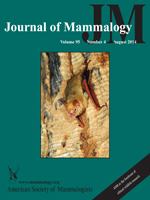The snow leopard (Panthera uncia) is an endangered carnivore of southern and central Asia. Approximate 10% of the global population occurs in the Himalayan region of Nepal. The snow leopard is thought to be in decline because of human–snow leopard conflicts, poaching, habitat loss and fragmentation, decreasing prey populations, and a lack of awareness and enforcement of conservation legislation. In this study, we used habitat surveys and genetic analyses of putative snow leopard scats to estimate the abundance, habitat preferences, and diet profile of the snow leopard in the Annapurna Conservation Area, Nepal. Cliffs, grassland, and shrubland at high elevation (3,000–5,000 m) were the preferred habitats of snow leopards. Eighty-three percent of collected scats collected were verified to be from snow leopards using mitochondrial DNA cytochrome-b species-specific polymerase chain reaction assays. Sixty-two percent of the scats were successfully genotyped using 6 microsatellite markers, and identified as having originated from 5 different individuals. The dispersion of multiple scats from the same individual suggested minimum movement ranges of 89.4 km2 for males and 59.3 km2 for females. Estimated population density was 1.9 individuals/100 km2 and 22 snow leopards were estimated to inhabit the upper Mustang region. Microhistological analysis of scats (n = 248) revealed that blue sheep (Pseudois nayaur) was the primary wild prey (63%), and livestock also contributed significantly (18%) to snow leopard diet. We used a multipronged strategy for assessing conservation options for this rare carnivore and compared our findings with those pertaining to other predators of the region that share similar habitats and resources. The findings from this study will be helpful in managing snow leopards and similar carnivore populations across the snow leopard's entire geographic range.
How to translate text using browser tools
1 August 2014
Multipronged strategy including genetic analysis for assessing conservation options for the snow leopard in the central Himalaya
Achyut Aryal,
Dianne Brunton,
Weihong Ji,
Dibesh Karmacharya,
Tom McCarthy,
Roberta Bencini,
David Raubenheimer
ACCESS THE FULL ARTICLE

Journal of Mammalogy
Vol. 95 • No. 4
August 2014
Vol. 95 • No. 4
August 2014
diet
distribution
livestock
noninvasive genetic analysis
occupancy
prey




